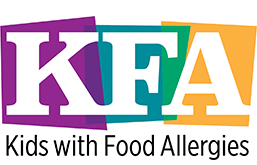If you’re a teacher or serve as a staff member at a school, you’ve probably had students with food allergies. Food can be a common part of the learning experience – whether it’s during class events, snack times, or even arts and crafts.
Reading labels is a vital part of helping prevent food allergy reactions at school. Anyone who works with students who have food allergies can benefit from knowing how to recognize food allergens on labels.
Here are label reading tips for teachers, school staff, and volunteers to help prevent food allergy reactions:
1. Read every label. The Food Allergen Labeling Consumer Protection Act (FALCPA) states foods that have any of the 9 most common allergens must list them on the label in plain language. These foods are:
- Egg
- Fish
- Milk
- Peanuts
- Sesame
- Shellfish
- Soy
- Tree nuts
- Wheat
If a student has an allergy to a food that is not on the list above, read the entire ingredients list carefully for their food allergen. Allergens that aren’t on this list may not be clearly labeled. Work with their parents or caregivers on what ingredients to watch for.
2. Read the entire label. Don’t only look for bold print or a “contains” statement. Companies do not have to use a bolded font for all food allergens. You must always read the entire ingredients label.
Kids with Food Allergies (KFA) has food allergy management guides for many of the most common food allergens.
3. Understand precautionary allergen labels (allergy warning statements).
Statements like “may contain...” or “processed in a facility with...” may not be accurate or consistent. They are not always a good measure of whether a food contains an allergen. Follow the child’s school health care plan to know if they can eat foods with these types of labels.

4. Check for “natural flavors.” If a natural flavor contains one of the top allergens, it will be in the ingredients list or in a “contains” statement in plain language. Other allergens, like corn, sunflower, or banana may hide in natural flavors.

5. “Non-dairy” and “dairy-free” do not always mean there are no milk ingredients. A food can use the term “non-dairy” on the packaging even if the product contains casein, a milk protein. Creamers and whipped toppings that contain sodium caseinate are often labeled as “non-dairy.” Even some cheeses may be labeled as “non-dairy” but actually contain milk protein. The term “dairy-free” is not regulated but will sometimes be used by manufacturers to describe lactose-free products. Read the entire ingredient label to check for milk ingredients.

Some foods may also include animal-free milk. It may be listed as non-animal whey protein. Even though it did not come from an animal, people with a milk allergy can still react to it. The FALCPA requires food makers who use this type of milk to list milk as an allergen on ingredient labels.
6. Don’t rely on terms like “school safe,” “classroom safe,” “allergy free” or “allergy safe.” The food may still contain an allergen of a child in your classroom – even one of the most common allergens. Read the entire ingredient label of every food.

7. Some non-food products contain food allergens. You can find food allergens in other items that might be in your classroom, such as personal care items (like lotions and soaps), pet food, toys, craft supplies and play dough. These items may not have an ingredient list or may list allergens by their botanical names.

8. Remember to read every label every time. Food companies can change ingredients and manufacturing processes at any time. Even different sizes or packages of the same food can have different ingredients and advisory labels. And if the food doesn't have a label, don't allow the child with food allergies to eat the food.










Comments (0)